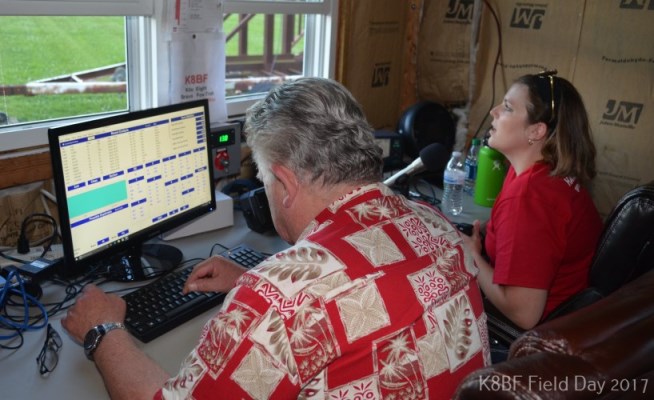One of the coolest parts of ARRL Field Day is watching a new licensee get on the air for the first time. Many longtime Amateur Radio operators can remember the thrill of making that first of many thousands of contacts. You can provide this opportunity by setting up a dedicated GOTA (Get On The Air) Station, where even non-Hams can experience what all of us already know: amazing things can happen with just a wire and a radio.
Plus, having a GOTA station on Field Day earns you extra points in competition against other clubs. Of course, the real reward is knowing you’re doing your part to introduce Ham Radio to potential future operators. Are you planning to operate a GOTA station for Field Day 2018 (June 23-24)?
Here are a few tips to make it a success:
First, know the details. Here are the basics: Clubs competing for points on Field Day can have one GOTA station. The station may operate on any amateur band on which Field Day operation is permitted (HF or VHF). Band privileges will be determined by the license held by the control operator, who must always be present at the control point of the GOTA station when transmitting.
Non-licensees may participate with the control operator by speaking into the microphone, sending CW, or making digital contacts. The GOTA station may contact any other amateur radio station, with a few exceptions. Click here for complete rules from the ARRL.
Make sure you’ve got the gear. While every GOTA station will be different, you’ll want to bring a tent or canopy, table and chairs, radio, antenna, CW key, plenty of coax cable, power supply and power cable, extension cords, and laptop with power cord. You’ll also want paper and pencil, bug spray, sunscreen (and a good hat), and a great attitude. Show them what true Hams are all about! And be sure to have handouts ready in case guests want more information about your club. Some clubs give out a certificate to individuals who make their first QSO—a nice keepsake as they grow into the hobby.
Make it easy and comfortable. For seasoned operators, getting on the air is second nature—as easy as collapsing into bed after a 24-hour CW session. Not so for the first-timer. “I don’t want to do something wrong” is a familiar phrase heard at GOTA stations, as newbies fear an on-air misstep will send an FCC agent pounding on their front door.
Be patient. Walk them through the steps of what to say and how to say it. Better yet, demonstrate how it’s done yourself. You can really make it simple by providing a script showing the GOTA station’s call sign written out phonetically with exact wording on how to call and answer CQ.
Explain but don’t overwhelm. You know a lot about Ham Radio, but that doesn’t mean you have to dazzle non-Hams and new licensees with your vast knowledge. The most important thing is to explain the practical and fun aspects of what they’re doing at the GOTA station. Talk about DXing, contesting, and, most importantly, emergency communications. If they have specific questions, feel free to elaborate, but go easy on the technical stuff unless you sense a kindred “techie” spirit.


